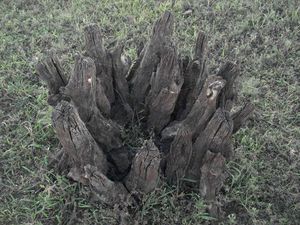Coronilla Root: Difference between revisions
mNo edit summary |
No edit summary |
||
| Line 1: | Line 1: | ||
[[Image:raizcoronilla.jpg|right|thumb|Coronilla]] | |||
[[Image: | |||
http://en.wikipedia.org/wiki/Smoking_pipe_(tobacco) | http://en.wikipedia.org/wiki/Smoking_pipe_(tobacco) | ||
The Coronilla (scutia buxifolia) is a stout, short and thorny tree. It is very common in the hills and riverside forest of Southern Brazil, Uruguay and Northern Argentina. It has a very slow growth rate, just 2 millimetres by year. Its wood is hard and heavy, very appreciated for firewood. | The Coronilla (''scutia buxifolia'') is a stout, short and thorny tree. It is very common in the hills and riverside forest of Southern Brazil, Uruguay and Northern Argentina. It has a very slow growth rate, just 2 millimetres by year. Its wood is hard and heavy, very appreciated for firewood. | ||
Coronilla roots ages slowly in open air and under the action of wheather and mineral elements of the river. They are unearthing when the riverbed is low and then used for wood-carving, especially pipe-carving. Because of the way it ages, coronilla wood is considered an ideal material for this issue: pipes made with coronilla lignite don’t burn, heat or crack. | Coronilla roots ages slowly in open air and under the action of wheather and mineral elements of the river. They are unearthing when the riverbed is low and then used for wood-carving, especially pipe-carving. Because of the way it ages, coronilla wood is considered an ideal material for this issue: pipes made with coronilla lignite don’t burn, heat or crack. | ||
Send your questions, we’ll be pleased to reply: ferrizzopipes@netgate.com.uy | Send your questions, we’ll be pleased to reply: ferrizzopipes@netgate.com.uy | ||
Latest revision as of 23:28, 1 May 2008
http://en.wikipedia.org/wiki/Smoking_pipe_(tobacco)
The Coronilla (scutia buxifolia) is a stout, short and thorny tree. It is very common in the hills and riverside forest of Southern Brazil, Uruguay and Northern Argentina. It has a very slow growth rate, just 2 millimetres by year. Its wood is hard and heavy, very appreciated for firewood.
Coronilla roots ages slowly in open air and under the action of wheather and mineral elements of the river. They are unearthing when the riverbed is low and then used for wood-carving, especially pipe-carving. Because of the way it ages, coronilla wood is considered an ideal material for this issue: pipes made with coronilla lignite don’t burn, heat or crack.
Send your questions, we’ll be pleased to reply: ferrizzopipes@netgate.com.uy
